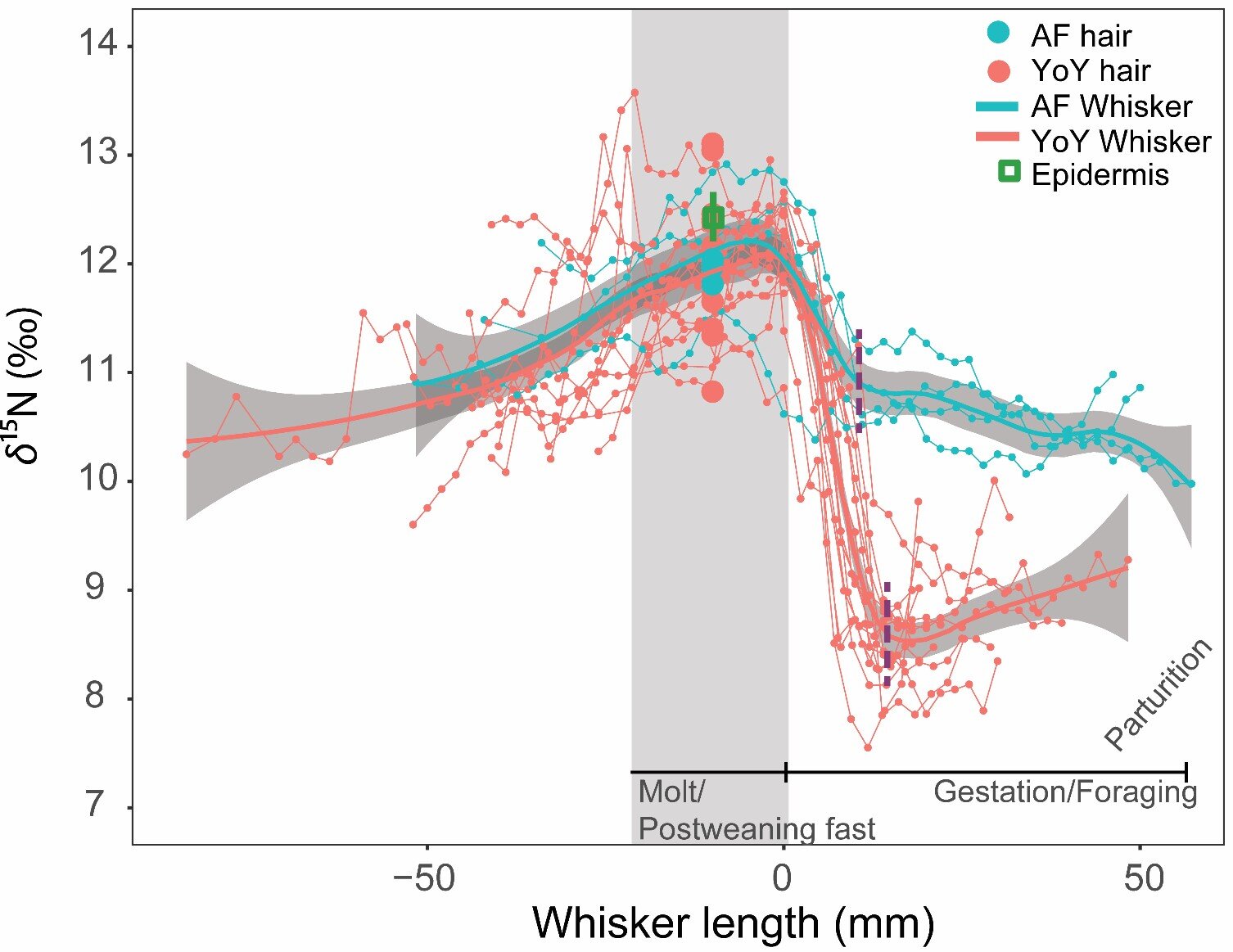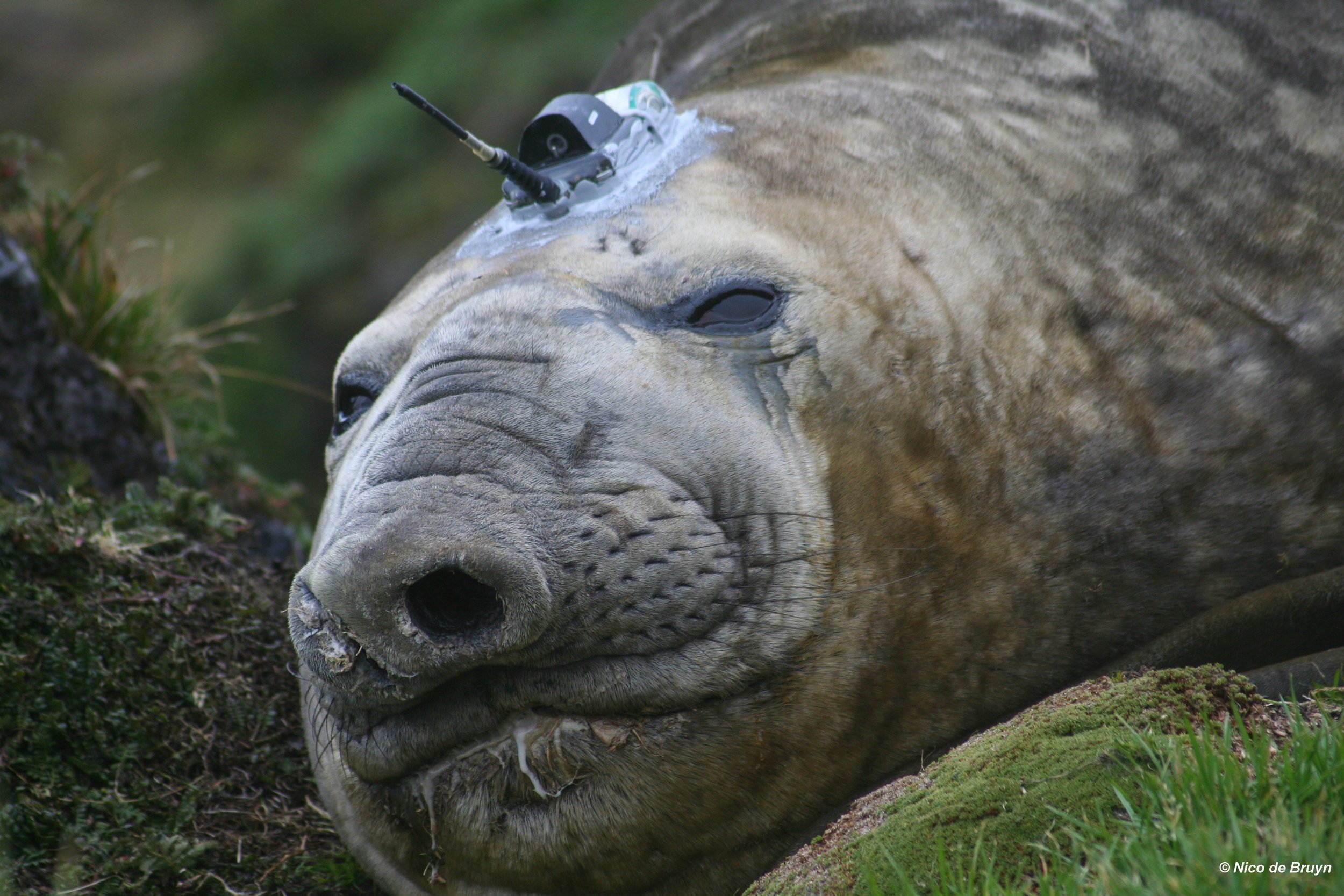Can we use molted hair stable isotope and amino acid δ15N values to assess foraging specialization?
/Naturally shed tissues, such as hair or feathers, can be sampled using minimally invasive approaches and are increasingly used for stable isotope-based dietary studies. Between November and February each year, southern elephant seals (SES) haul out ashore to undergo a ‘catastrophic’ moult. Their hair and layers of skin are shed while fasting and are replaced by a new pelage before returning to sea. In this latest MIMMP paper led by Dr. Nico Lübcker and colleagues, bulk tissue and amino acid carbon (δ13C) and nitrogen (δ15N) stable isotope values of hair, epidermis, and whiskers of SES were used to evaluate if hair and epidermal isotope values provide dietary information that is ecologically meaningful. Because the shed hair is potentially synthesized while these animals are fasting, it is possible that the stable isotope values measured in the hair do not provide an accurate reflection of the isotope values of their prey.
In the paper “Validating the use of bulk tissue stable isotope and amino acid δ15N values measured in molted hair and epidermis of elephant seals to assess temporal foraging niche specialization” published in Marine Ecology Progress Series, it is demonstrated that the new SES hair is rapidly synthesized from recycled endogenous sources while fasting. Both the bulk tissue and amino acid δ15N values are adversely influenced by the physiological changes associated with fasting. This was similarly observed in the portion of their whiskers synthesized while on land which has been previously published (Lübcker et al. 2020; https://doi.org/10.1007/s00442-020-04645-5).
This study is the first to combine bulk tissue and amino acid isotope values to describe how naturally shed tissues that are synthesized while animals are fasting, and affected by physiological factors. Such physiological method validations are required to understand the limitations of these sampling approaches, and emphasizes the need to differentiate between ecological and physiological factors that influence tissue isotope values before drawing inferences about their foraging and movement ecology.
Figure from Lubcker et al. 2021. Nitrogen (δ15N) isotope values measured in temporally overlapping, paired hair (circles) and chronologically sub-sampled whiskers (lines) of young-of-the-year (YoY; n = 16 individuals) and adult female (AF; n = 4) southern elephant seals. The mean (±SD) epidermis δ15N values of n = 5 different adult females are also shown for comparison. Solid lines: fitted Loess smoothers with associated standard error (gray shading); vertical gray rectangle: portion of the whisker grown concurrently with hair synthesis during the molt fast; purple dashed lines: position along the whiskers that reflects at sea foraging with the plot position (x-axis) set to zero, signifying the end of the molt fast (Lübcker et al. 2020a). The hair and epidermis bulk tissue isotope values were overlaid with the whisker δ15N values to illustrate the position along the length of the whiskers where the δ15N values were most comparable. The hair and epidermis δ15N values resembled the whisker δ15N values during a known catabolic state.
This finding is topical and challenges the notion that naturally shed hair and epidermal isotope values are useful for dietary reconstructions. Molt in SES is energetically demanding. Stored proteins are catabolized for hair synthesis, leading to additional enrichment of the δ15N values incorporated into the newly synthesized hair. Although naturally shed tissues are easy to collect, the timing of tissue synthesis relative to the life history of the organism should be considered when interpreting stable isotope data. Despite these limitations, molted hair can be used to detect extreme foraging events, which we show using an extensive data set of hair sampled from marked individuals (n = 331) that hauled out on Marion Island during the 2012−2013 annual pelage molt.
Read the full article HERE



















